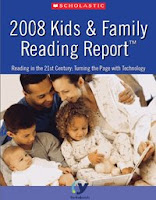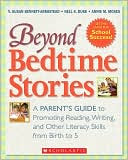 Reach Higher, America:Overcoming Crisis in the U.S. Workforce is the final report of the National Commission on Adult Literacy
Reach Higher, America:Overcoming Crisis in the U.S. Workforce is the final report of the National Commission on Adult Literacy
Executive Summary
Education drives the economy. Almost a decade into the 21st Century, America faces a choice: We can invest in the basic education and skills of our workforce and remain competitive in today’s global economy, or we can continue to overlook glaring evidence of a national crisis and move further down the path to decline.
In Reach Higher, America, the National Commission on Adult Literacy presents powerful evidence that our failure to address America’s adult education and workforce skills needs is putting our country in great jeopardy and threatening our nation’s standard of living and economic viability. The Commission recommends immediate action to reverse the course we are on.
It calls for strong, bold leadership from federal and state government, and it challenges business leaders, philanthropy, and the nonprofit sector to become part of the solution.
FACING THE PRESENT
America is losing its place as a world leader in education, and in fact is becoming less educated. Among the 30 OECD free-market countries, the U.S. is the only nation where young adults are less educated than the previous generation.
And we are losing ground to other countries in educational attainment. More and more, the American economy requires that most workers have at least some postsecondary education or occupational training to be ready for current and future jobs in the global marketplace, yet we are moving further from that goal.
By 1 set of measures, more than 88 million adults have at least one major educational barrier — no high school diploma, no college, or ESL language needs.
With a current U.S. labor force of about 150 million (16 and older), a troubling number of prime working age adults likely will fall behind in their struggle to get higher wage jobs, or to qualify for the college courses or job training that will help them join or advance in jobs that pay a family-sustaining wage.
And we are losing ground to other countries in educational attainment. More and more, the American economy requires that most workers have at least some postsecondary education or occupational training to be ready for current and future jobs in the global marketplace, yet we are moving further from that goal.
By 1 set of measures, more than 88 million adults have at least one major educational barrier — no high school diploma, no college, or ESL language needs.
With a current U.S. labor force of about 150 million (16 and older), a troubling number of prime working age adults likely will fall behind in their struggle to get higher wage jobs, or to qualify for the college courses or job training that will help them join or advance in jobs that pay a family-sustaining wage.
More than 2/3’s of the workforce is beyond the reach of the schools. Yet our current adult education system — designed for a different time and different challenges — is not equipped to address this urgent national need. Federal adult education, training, and English language programs reach only about 3 million adults a year.
~ U.S. Scores Poorly Internationally. . . The U.S. is the only country among 30 OECD free-market countries where the current generation is less well educated than the previous one.
. . . The U.S. is also losing ground in international comparisons in terms of high school diplomas and college degrees awarded.
. . . Further, while we score as one of the highest countries in numbers of well educated people we also score near the top in the largest number of people at the lowest education levels — a form of inequality that affects all Americans.
. . . Minority groups — whose numbers, in some cases, are increasing as a percentage of overall population growth—are disproportionately at the low end of educational attainment, especially Hispanics, blacks, and American Indians/Alaska Natives.
. . . About 55 % of adults at the lowest literacy levels did not graduate from high school and have no GED or high school equivalency diploma.
~ High School Dropout Rates Are Staggering
. . . Every year, 1 in 3 young adults — more than 1.2 million people drop out of high school. Even more alarming, many high school graduates who do complete high school lack basic skills and readiness for job training and college.
~ Low Parent Learning Affects Children
. . . 1 in 4 U.S. working families is low-income, and 1 in 5 children lives in poverty. Parents and caregivers in many of these households lack the education and skills to earn a family-sustaining wage.
~ Low Literacy in Burgeoning Prison Population
. . . 1 in every 100 U.S. adults 16 and older is in prison or jail in America (about 2.3 million in 2006).
. . . About 43 % do not have a high school diploma or equivalent, and 56% have very low literacy skills. 95 % of incarcerated people return to our communities.
. . . It is hard enough for them to find jobs burdened with a prison record, but it is nearly impossible without the necessary education and basic skills.
~ Large and Growing English Language and Literacy Need
. . . About 2 million immigrants come to the U.S. each year seeking jobs and better lives — the promise of America.
. . . About 50 % of them have low literacy levels and lack high school education and English language skills, severely limiting their access to jobs and job training, college, and citizenship.
~ Aging of the Baby Boomers. . . About 8,000 people turn 60 every day. As these “baby boomers”leave the workforce, their places are being taken by the smaller cohort of workers born in the mid-to-late 1960s and early 1970s. As a result, the U.S. workforce is increasing more slowly and, without intervention, is likely to become less educated on average.
. . . Minority groups — whose numbers, in some cases, are increasing as a percentage of overall population growth—are disproportionately at the low end of educational attainment, especially Hispanics, blacks, and American Indians/Alaska Natives.
. . . About 55 % of adults at the lowest literacy levels did not graduate from high school and have no GED or high school equivalency diploma.
~ High School Dropout Rates Are Staggering
. . . Every year, 1 in 3 young adults — more than 1.2 million people drop out of high school. Even more alarming, many high school graduates who do complete high school lack basic skills and readiness for job training and college.
~ Low Parent Learning Affects Children
. . . 1 in 4 U.S. working families is low-income, and 1 in 5 children lives in poverty. Parents and caregivers in many of these households lack the education and skills to earn a family-sustaining wage.
~ Low Literacy in Burgeoning Prison Population
. . . 1 in every 100 U.S. adults 16 and older is in prison or jail in America (about 2.3 million in 2006).
. . . About 43 % do not have a high school diploma or equivalent, and 56% have very low literacy skills. 95 % of incarcerated people return to our communities.
. . . It is hard enough for them to find jobs burdened with a prison record, but it is nearly impossible without the necessary education and basic skills.
~ Large and Growing English Language and Literacy Need
. . . About 2 million immigrants come to the U.S. each year seeking jobs and better lives — the promise of America.
. . . About 50 % of them have low literacy levels and lack high school education and English language skills, severely limiting their access to jobs and job training, college, and citizenship.
~ Aging of the Baby Boomers. . . About 8,000 people turn 60 every day. As these “baby boomers”leave the workforce, their places are being taken by the smaller cohort of workers born in the mid-to-late 1960s and early 1970s. As a result, the U.S. workforce is increasing more slowly and, without intervention, is likely to become less educated on average.















